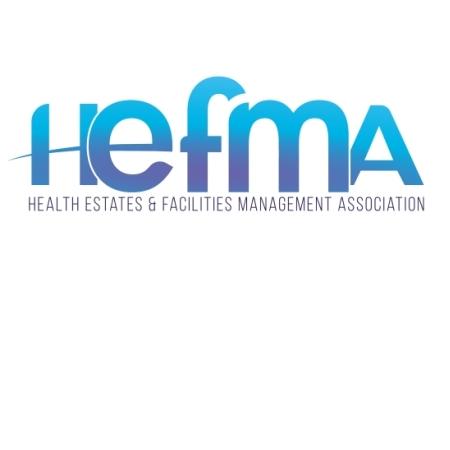Should the NHS be doing a lot more than it is to support local communities? Jane Renton investigates.
The British are inordinately proud of the NHS. So much so in fact that it featured as one of the key components that define the nation in its all-singing, all-dancing spectacular to mark the opening of the 2012 Olympic Games in London. You only have to recall the furore over President Trump’s tweets two years ago about the British healthcare system going ‘broke and not working’ to realise just how upset British people get about such criticisms levelled at their favourite institution.
Yes, the tax-funded NHS allows us to be ill and to receive medical care, free at the point of access, unlike many other healthcare systems. It performs relatively well in the management of long-term chronic diseases, such as diabetes and kidney disease. However, international comparisons with other healthcare systems over outcomes are less than flattering when it comes to the ‘big killer’ diseases - certain cancers, heart disease and stroke.
While the NHS may be “the closest thing we have to a religion”, as former Chancellor Nigel Lawson, once declared, such deification makes it harder to hold the organisation to account or to demand it does things better and differently given its constrained finances - especially now, as we brace ourselves for possible pandemic.
Yet the institution needs to place greater emphasis on prevention as opposed to costly medical interventions of questionable efficacy. It also needs to repay boundless public goodwill by leveraging its considerable resources to help stop local communities becoming sick in the first place. That means going out, finding the right partners and doing more in local communities than ever previously imagined. By doing so, the NHS could also resolve many long-running problems of its own.
It is, after all, Britain’s largest employer by a long shot, employing 1.3m people. It receives some £140bn of public funding, a sum that is rising more quickly than the other big spending departments such as Work & Pensions and Education. But the NHS has a moral, political and economic duty to use this money to directly support local businesses, jobs and people to a greater extent than it is already doing, says the Health Foundation in a recent report, ‘Building Healthier Communities: the role of the NHS as an anchor institution’. This will be critical in preventing further widening of growing inequalities, say the report’s authors.
The role of the anchor institution
Unfortunately, the NHS is less of an anchor institution than other large public sector organisations, such as some local authorities and universities, but nevertheless shares some of their common characteristics; they are unlikely to relocate, and they play a significant role in the life of their surrounding communities. They also have sizeable assets which can be used to support local community wealth building through, among other things, workforce training, as well as through procurement practices.
“The NHS could make a far greater contribution to this goal: it is the largest employer in the country, spends billions on goods and services each year and controls significant land and physical assets - all of which make it a powerful ‘anchor institution’,” states the report.
However, as the report highlights, other institutions - local authorities and universities - appear to be more conscious of their role as anchors than the NHS. When the NHS does take on this moral and economic role, it tends to occur in relative isolation and confined to the actions of a limited number of Trusts. There is little in the way of anchor initiatives by either general practice or clinical commissioning groups.
Where Trusts do adopt an anchor approach, there is little in the way of systemic evaluation. That makes it hard to know where future efforts should be prioritised and where interventions will have the most beneficial impacts on wider communities.
“[The NHS] can do more to channel their strategic influence to improve population health,” the authors add.
But there are signs that things could change. The 2019 NHS Long Term Plan specifically pledges to explore the potential of the NHS to become an anchor institution and to explore examples of NHS initiatives that have demonstrably helped individual communities.
Indeed, the Long Term Plan and the previous NHS Five Year Forward View of 2014 both called for a radical emphasis on preventative healthcare as part of the organisation’s efforts to help narrow health inequalities and poverty, which costs the UK £78bn a year to deal with.
The recent election victory as a result of former Labour votes in working class areas going over to the Tories, appears to have given a boost to localism, or perhaps what can be best described as post-liberalism. While Brexit might point to more, not less globalisation as well as greater concentration of power and wealth by the higher echelons of the knowledge class, Boris Johnson cannot hope to retain power if he does not re-direct resources and jobs outside of London.
The government needs to facilitate a shift of resources, including those of the NHS, towards helping create shorter supply chains. It also needs to create the right local transport links - even just better bus networks - rather than those that merely focus on air or rail networks that bring everyone to London to fly out globally. One cannot fail to note that globalisation has resulted in greater inequality and falling UK productivity, something that has had a visibly detrimental effect on wider communities.
Tackling workforce shortages
In terms of the wider healthcare estates and facilities management provision, this could prove an invaluable case of enlightened self-interest, particularly in terms of recruitment for ongoing labour and skill shortages.
“There are multiple strategies that the NHS, as an anchor institution, can adopt to address workforce shortages, including better attention to career progression and training for NHS employees,” says the Health Foundation.
However, better insights into the demographic needs of the NHS’s various communities will be vital. So too will be greater emphasis on training and support to help candidates from more deprived backgrounds obtain jobs in healthcare that could transform their lives.
“Building a workforce that is more representative of the local area can also better respond to patients’ needs,” says the report.
Moreover, employing local people can help reduce the carbon footprint of the NHS by reducing the number of staff reliant on transport to get to work.
But in order to achieve all this, the NHS will have to:
• Create special pre-employment programmes, work placements and volunteer work experience
• Engage more with young people and support their career development
• Increase the number and types of apprenticeships available.
The NHS also needs to provide better working experiences for disadvantaged and people from minority ethnic backgrounds, says the Health Foundation. “Workforce shortages are compounded by poor experiences for some groups of staff.”
A 2018 NHS Workforce Race Equality Standard survey found that 15% of black and minority ethnic staff claimed they had been subjected to discrimination in the past 12 months, while 28% did not believe that their organisation provided equal opportunities for career progression (compared to 7% and 13% of white staff, respectively).
The procurement challenge
Perhaps a more difficult area for wider community engagement is through NHS procurement. The organisation spends some £27bn on goods and services each year, but certainly needs to spend more than it is probably doing with small and medium-sized companies, community groups and the voluntary sector. An audit is certainly required to assess how much procurement spend goes on supporting local businesses and communities.
A recent study of 10 anchor organisations in Leeds, comprising four local authorities, two colleges, one university, a hospital, one clinical commissioning group and a housing association, revealed a collective procurement spend of £14bn a year on goods and services. Yet almost half of this money - £655m - left the local economy. By shifting between 5% and 10% of this spend locally, those organisations could have generated between them an additional £168m and £196m a year for their local communities after knock-on effect multipliers are factored in.
The Health Foundation believes it is vital that principles of social value are factored into public procurement processes. However, its researchers acknowledge that this will be far from easy given current FOM (Future Operating Model) requirements demanding greater price standardisation and transparency. FOM means that 80% of NHS spending on everyday hospital goods, consumables and capital equipment must be purchased through centralised procedures, a reform that was instituted to end ‘unwarranted’ price variation under the Carter Review.
Nevertheless, the report’s authors remain convinced there is still scope to provide greater support to community ventures and local businesses. After all, the government allegedly remains committed to spending £1 in every £3 with SME’s by 2020, a mindset no doubt engendered by the demise of Carillion at the end of 2018. Ways will have to be found to ensure that local communities get to share a bigger slice of the NHS procurement pie, especially those in more deprived regions.
Such a redistribution of resources would require enormous commitment by an NHS already struggling to keep pace with rising patient demands and the sudden onslaught of the Coronavirus - or Covid-19 as the latest superbug is now styled - could be the final straw in a system that seems unsustainable in its present form. But a revitalised NHS, less producer-led and more rooted to local community needs could truly transform the health, productivity, as well as the life chances of less advantaged groups.










